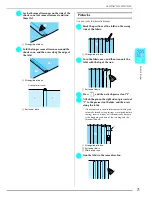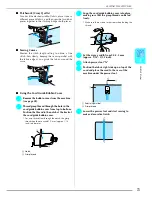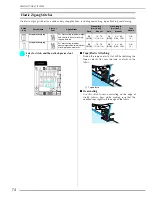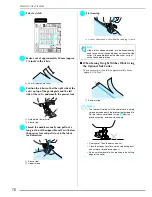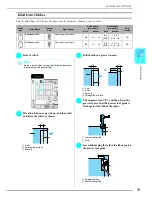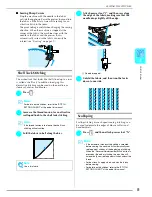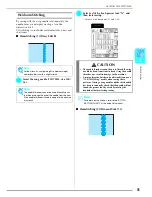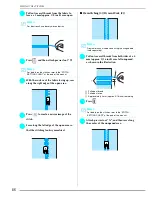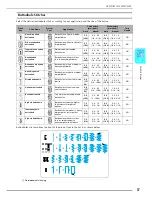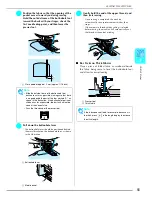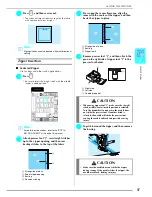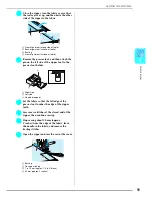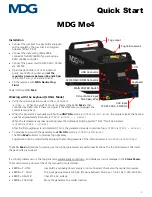
SEWING THE STITCHES
84
Tape or Elastic Attaching
Elastic tape is sewn onto the fabric unstretched.
a
Select a straight stitch, and then attach
presser foot “J”.
b
Set the stitch length to 4.0 mm (approx.
3/16 inch) and the thread tension to 2.0
(weaker tension).
c
Pull out 50 mm (approx. 1-15/16 inches) of
both the upper and bobbin threads (see
“Pulling Up the Bobbin Thread” on page 28).
a
Upper thread
b
Bobbin thread
c
50 mm
d
Sew two rows of straight stitches on the
surface of the fabric, and then pull the bobbin
threads to create the desired amount of
gather.
e
Pin the elastic tape to the wrong side of the
fabric with the elastic tape evenly positioned
on the gathers.
a
Elastic tape
f
Press
or .
g
While pulling the elastic tape so that it is
about the same length as the fabric, pull the
fabric at the pin nearest the front of the
presser foot with your right hand, and feed
the fabric behind the presser foot with your
left hand according to the feeding speed.
h
Pull out the threads for the straight stitches.
Note
Make sure that the automatic reverse/reinforcement
stitching and automatic thread cutting settings are not
selected.
a
b
c
a
Memo
For details on the stitches, refer to “Stitch Setting
Chart” at the end of this manual.
Memo
This is easy to do if the foot controller is used.
CAUTION
• Be sure the needle does not strike a basting pin, or
any other objects, during sewing. The thread could
tangle or the needle could break, causing injury.
Summary of Contents for Computerized Sewing and Quilting Machine
Page 9: ...8 ...
Page 51: ...USEFUL FUNCTIONS 50 ...
Page 101: ...SEWING THE STITCHES 100 ...
Page 119: ...COMBINING STITCH PATTERNS 118 Examples of Pattern Combinations ...
Page 137: ...USING STORED CUSTOM STITCHES 136 ...
Page 162: ...English 882 U60 XE0783 001 Printed in Taiwan Operation Manual 882 U60 ...


